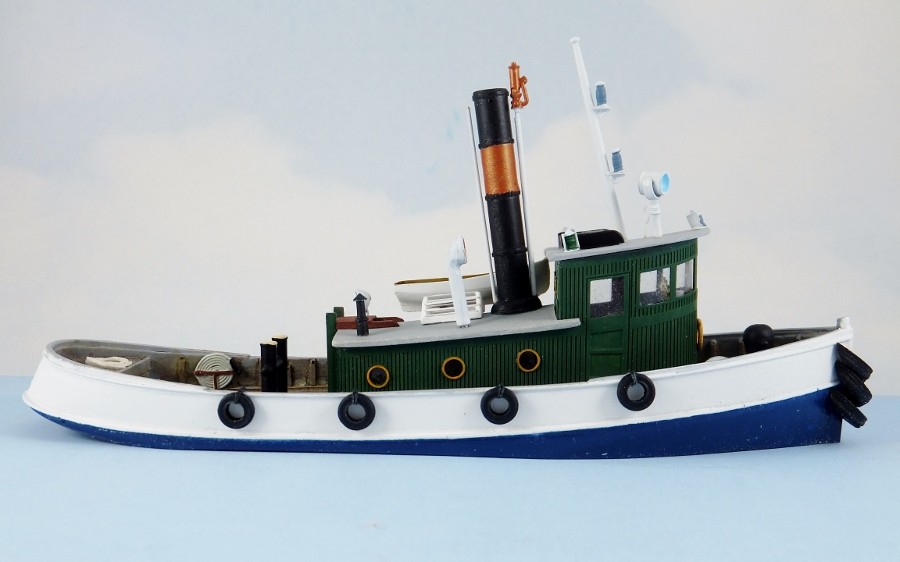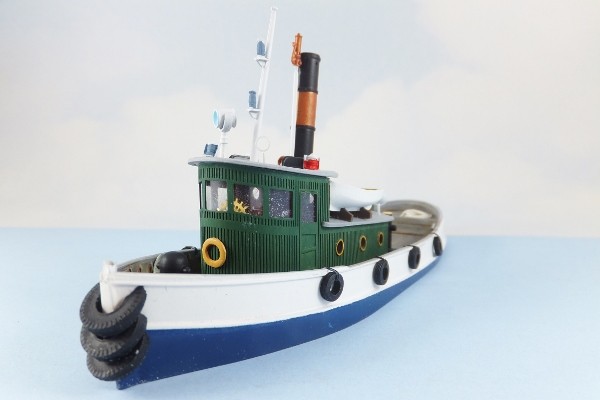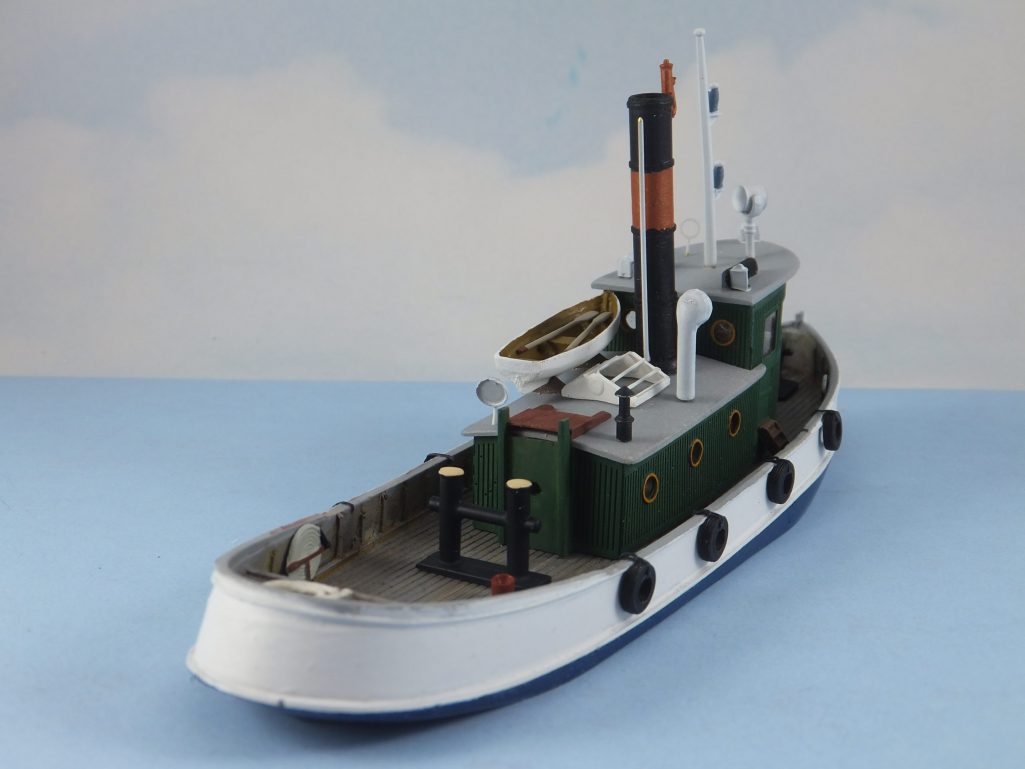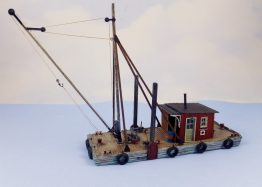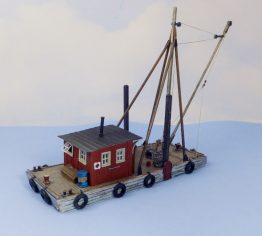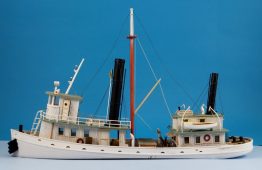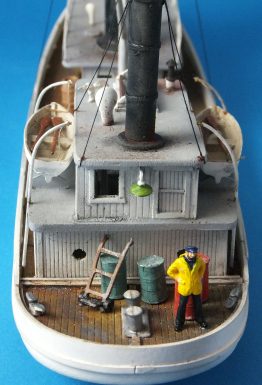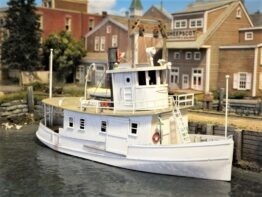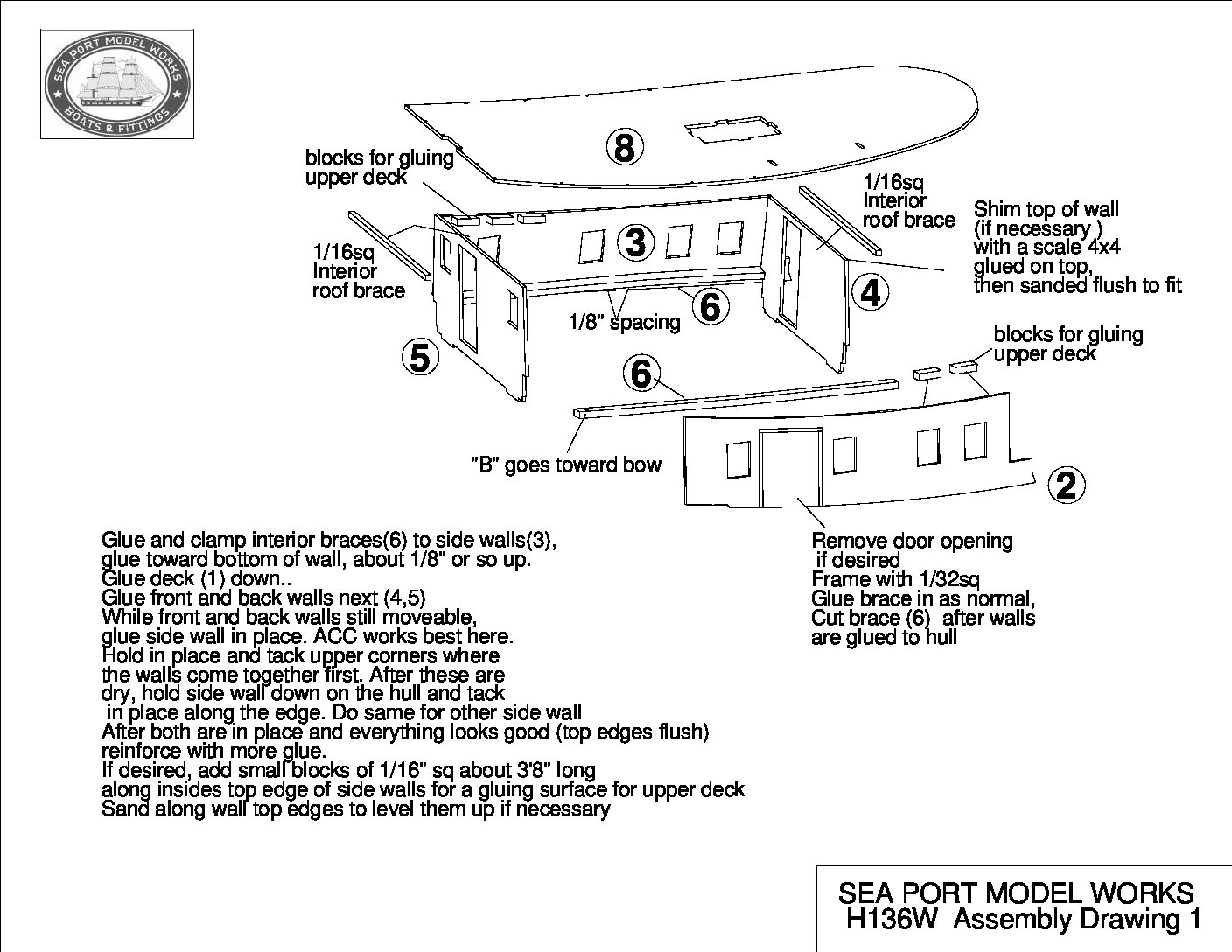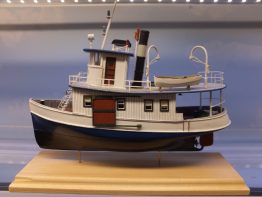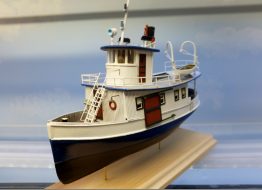Description
53′ Working Harbor Steam Tug – Fully built/finished model – Waterline – red
Actual Size: Length: 7-1/4“ Width: 2-1/8” Scale length: 53’
This fine waterline model was hand crafted, finely painted and detailed by our Professional Craftsman model boat builder.
We sincerely hope you enjoy this Tug and that it brings further realism to your layout, diorama or on your mantel or bookcase.
We also offer this Harbor Tug in the full hull version fully built/finished if you’d like one sitting high and dry in the boat yard for repair or storage, on the rail awaiting a bottom cleaning or as it gives you pleasure just looking at it on your mantle or bookcase.
Note: Regarding pick up and shipping of our Built-up models: Call us at 603-498-3849 for details.
Our built-up models are available for pick-up during shows posted on our website home page or at our shop in Hampton, New Hampshire. If shipping is desired, “special” packing is required and all packing, shipping and insurance costs are paid by the customer. Contact us at 603-498-3849
More Information: Sea Going Vessels, their captains and crews, have long captured man’s attention. The whole arena of ocean and large lake activities seem to be a statement of capitalism, perseverance, and risk taking. We are captured by the events, tales, and legends fostered by vessels on the large bodies of water.
However, it is not just the ocean liners, carriers, battleships, and freighters that capture our attention but also the offshore and inner harbor working tugboats. Tugs are an essential component in any working harbor. Tugs enhanced the development of railroads as well.
The harbor tug was and is popular in any working harbor on any large body of water, anywhere on planet earth. Its primary function is to assist larger vessels and barges into and out of harbors. Harbor tugs can be found pushing or pulling barges on creeks, maneuvering ships at docks, and countless other shipyard and harbor chores. It could be used as a pilot boat, mail boat, passenger ferry, etc. etc. etc. Back in the late 1800s and early 1900s they were steam powered and later converted to diesel. Often the original steam stacks would not be removed, but smaller stacks were run inside the original stack.
There is so much to say about this vessel called a tug. I will stop here and let the following writers give you greater accurate detail. I strongly recommend that you read up on the subject. Here are a few great books that you might have a hard time putting down.
ON THE HAWSER by Steve Lang and Peter Spectre TUGBOATS of NEW YORK by George Matteson TUGBOATS ON THE PISCATAQUA by Woodard D Openo, Ph.D.
